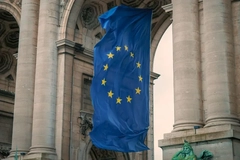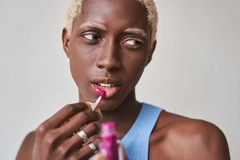European Commission announces first cosmetics regulation evaluation in over a decade

The European Commission is launching an evaluation of the Cosmetic Products Regulation (CPR) for the first time since 2013. For companies in the personal care sector, this could mean adjusting to new safety standards, updating product labels, or potentially reformulating certain products.
The CPR regulation sets the rules for cosmetic products sold in the EU, ensuring they are safe for consumers and that the market operates smoothly across all member states. With the industry evolving due to sustainability demands, digital advancements, and global competition, this review will determine whether the regulation still meets its goals.
The final report is expected by Q2 2026, and any changes could impact how cosmetics are formulated, marketed, and sold in the EU.
A public consultation is now open until March 21, allowing businesses, regulators, and consumers to provide input. The results of this evaluation could lead to revisions in areas such as ingredient safety, labeling requirements, and sustainability regulations.
Ripples for the industry
One focus of the review is ingredient safety. It will question whether stricter rules should apply to certain substances, such as allergens and endocrine disruptors, that have raised health concerns.
One of the most significant potential changes is how ingredients are regulated. If the EU adopts more stringent safety classifications, either for consumers or environmental reasons, brands may need to reformulate products, which could lead to higher costs and supply chain disruptions.
Companies using certain preservatives, UV filters, or fragrance ingredients might need to find alternatives.
While no major changes have been confirmed yet, this evaluation could set the stage for the next decade of EU cosmetics regulation.
 Companies using certain preservatives, UV filters, or fragrance ingredients might need to find alternatives.Revising the beauty rulebook
Companies using certain preservatives, UV filters, or fragrance ingredients might need to find alternatives.Revising the beauty rulebook
The CPR requires brands to assign a Responsible Person to oversee product compliance, list ingredients clearly on labels, and follow rules on the safety of substances used in formulations.
Since its enforcement, 50 amendments have been made to keep up with scientific advancements. However, the latest evaluation will be the first to review whether the regulation as a whole remains effective in the evolved industry landscape.
An area under review is labeling requirements and whether digital labeling — such as QR codes — could supplement or replace traditional packaging to provide more accessible product information.
Brands could benefit from shifting to digital labeling to meet sustainability goals as it reduces packaging waste. Technological upgrades for this move could also reduce business expenses.
The evaluation will examine the CPR’s role in green transitions and assess how well the regulation supports sustainability efforts. Additionally, it will assess the role digital developments play in the industry and how the growing trend of online cosmetic sales fits in.
Global impacts
Another concern is how the regulation might affect EU brands competing globally. If the CPR introduces new rules that differ significantly from international standards, it could create trade barriers. On the other hand, aligning with global regulations could make it easier for European brands to expand into new markets.
The review will consider global competitiveness and analyze whether the regulation helps EU cosmetics brands expand internationally or if it creates barriers that limit their success in international markets.












